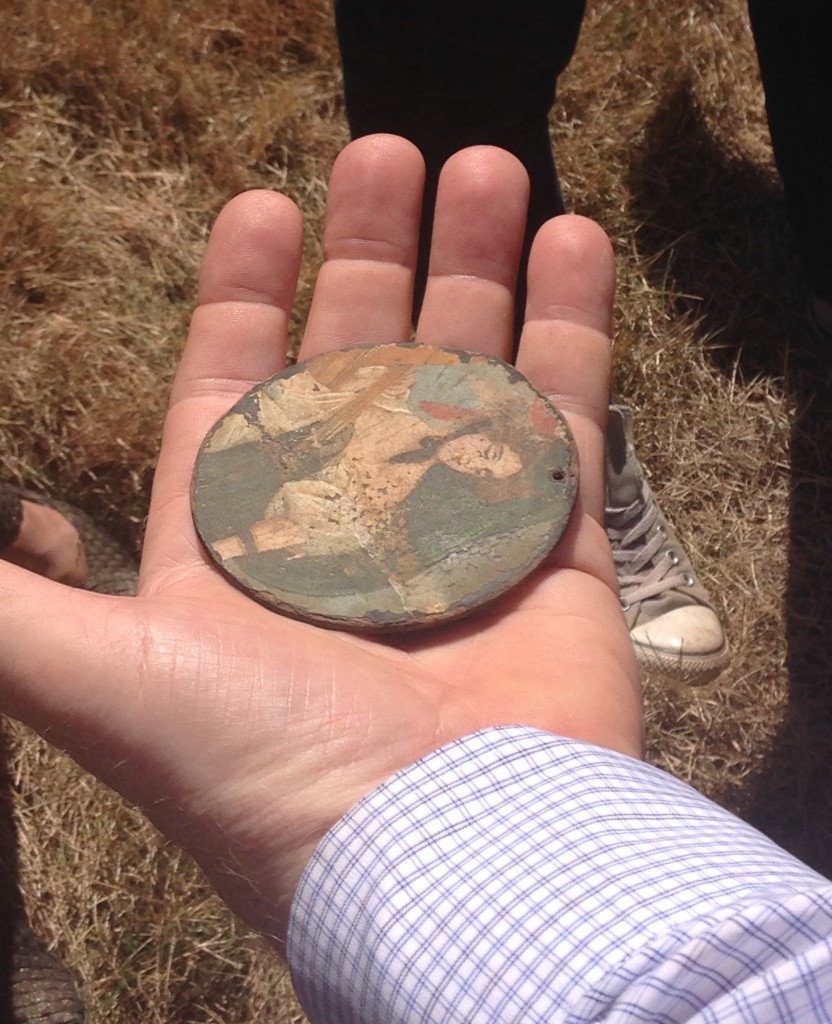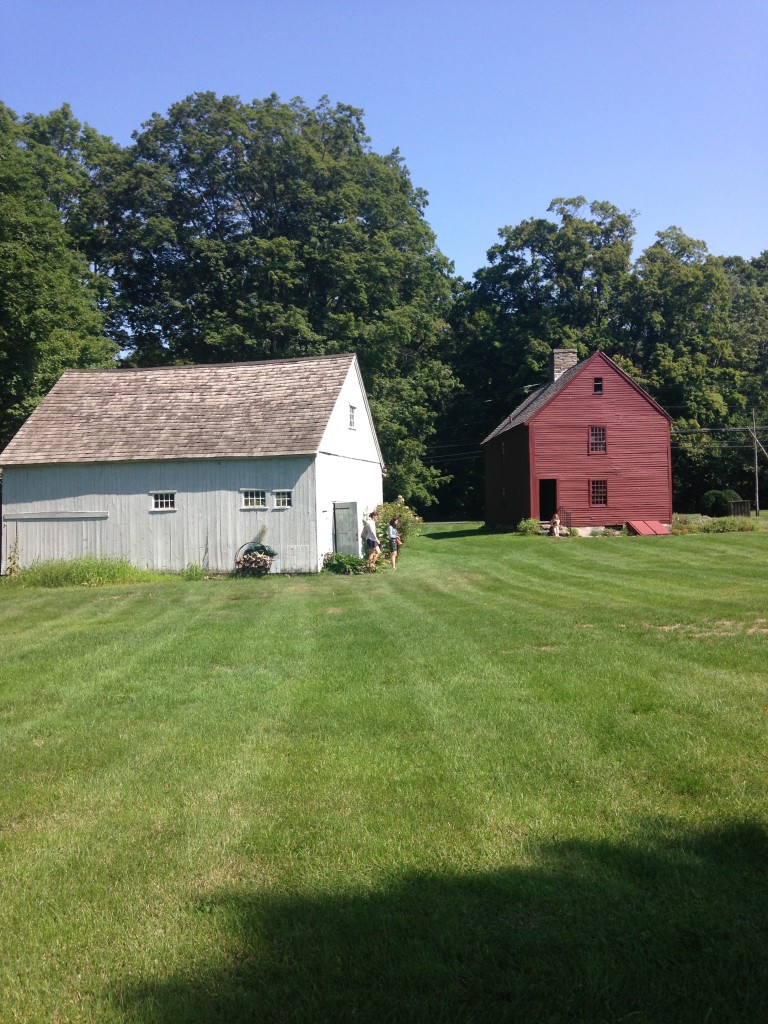One House; Many Histories
Almost two hundred years ago at the Old Manse in Concord, Massachusetts, Ralph Waldo Emerson looked outside his study’s window and wrote “Nature.” Nathaniel Hawthorne later looked through the same window of his new home and scratched his name into the pane.
Nathaniel Hawthorne’s signature on a window at the Old Manse
When many visitors think of the Old Manse, they most commonly remember it as a setting for the transcendentalist movement. Every year, thousands of visitors look to see Hawthorne’s signature in the glass and sit in a reproduction of the chair Emerson may have used to write one of his most famous essays. However, our guides taking us through the house were careful to remind us that those were not the only families who lived in the house. Just outside the window, there are fences built upon the foundations of barriers constructed by the Continental Army in the Battle of Lexington and Concord. Furniture dating to the time of the American Revolution stands next to graffiti left by nineteenth-century artists, reminding us of the house’s life before the Hawthornes came to stay in the nineteenth century.
Exploring the attic of a house in Plymouth, we found the outline of the original seventeenth century roof.
When the Class of 2017 toured New England this summer, we were struck by the visible layers of not just one history, but many narratives and lives that all have taken place and left their marks on the same structure. We were fascinated by a home in Plymouth, Massachusetts that dated to the seventeenth century, that had a remarkable amount of its original construction preserved. Even more so, we enjoyed speaking to the current resident, who remembers her own restoration of the home as a newlywed.
Relics of later occupants, discovered in a seventeenth century house in Plymouth.
Our visit to the Hurd House in Woodbury, Connecticut became one of our most significant stops of the trip to reveal the layers of memory that can be included in site interpretation. Parts of the home date to the seventeenth century, at a time when the town of Woodbury was first attracting settlers as the new frontier. When the house was acquired by the historical society in 1967, it was accordingly restored to the early colonial era. However, during our visit, we were reminded that early settler John Hurd and his family were not the only residents of the house. We were also told the story of the Skelly family, Irish immigrants who settled in Woodbury in the nineteenth century and kept the home in the family for over one hundred years. Throughout the house, we could see their lives through evidence of later renovations, like the shadow of past wallpaper on the walls. We were reminded of the memory and the significance of the site to them, through their descendant, Winterthur’s Director of Academic Affairs, Greg Landrey.
CAPTION: From left to right: an early barn on the property and a side view of the Hurd House, now a historic house museum operated by the local historical society in Woodbury, CT.
The history of an object or house can be tempting to interpret through one story, but in our week in New England, our class found that often the most resonating experiences happened when we stopped to listen to what the object was telling us – to reveal all of its stories.
By Michelle Fitzgerald, WPAMC Class of 2017
All photos by WPAMC Fellows and Ritchie Garrison





[…] but modest homes uncover their own hidden charms. I’m thinking of cozy built-in inglenooks, personal inscriptions, and clever multi-use spaces. It’s touching to see 200-year-old children’s cradles and […]